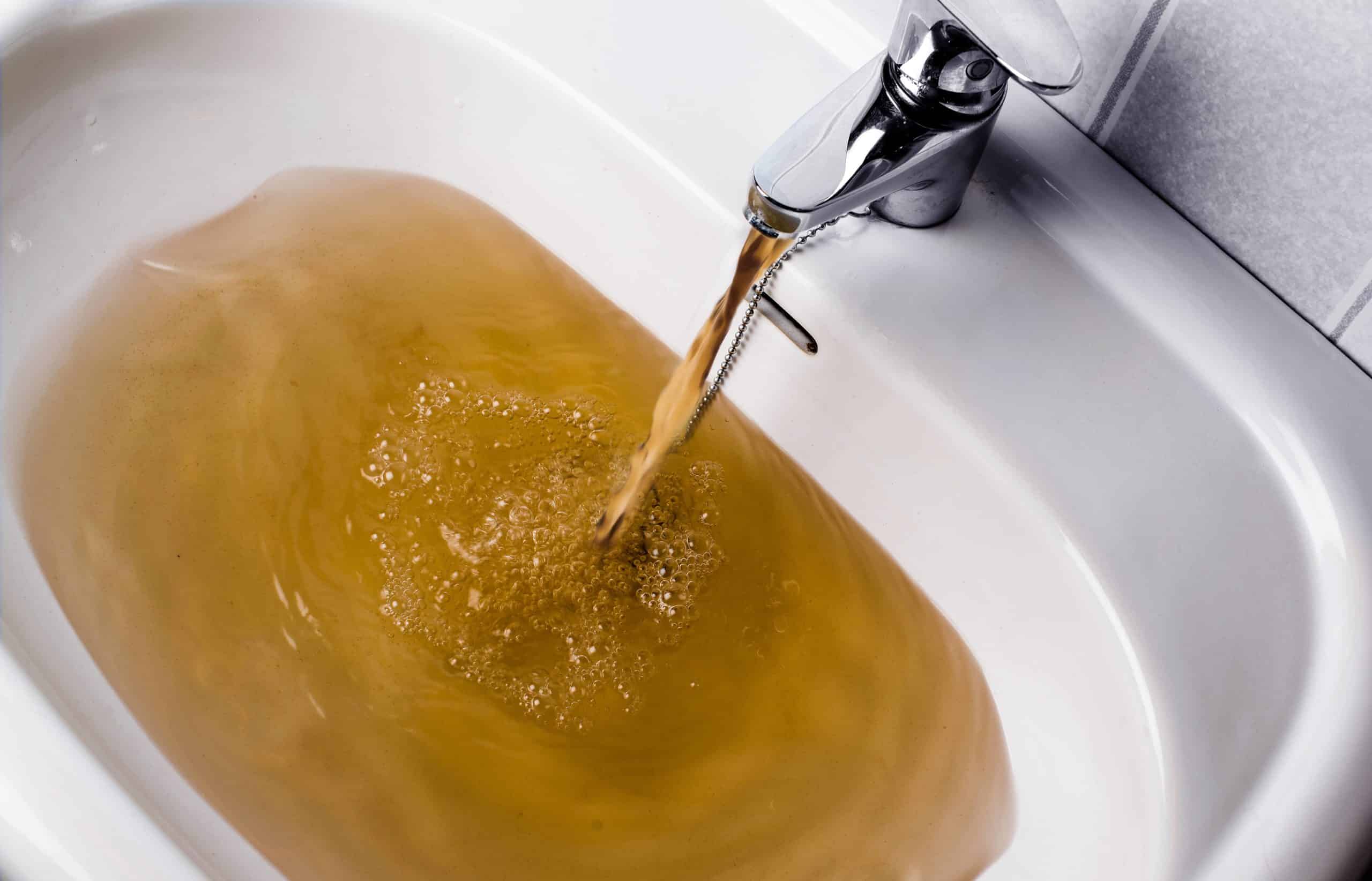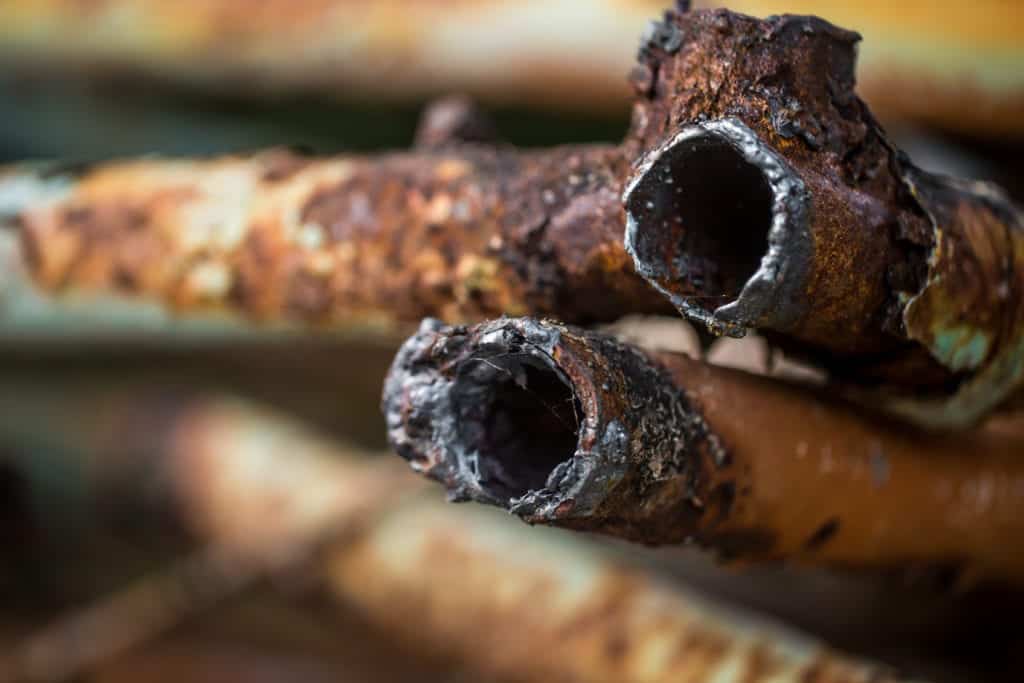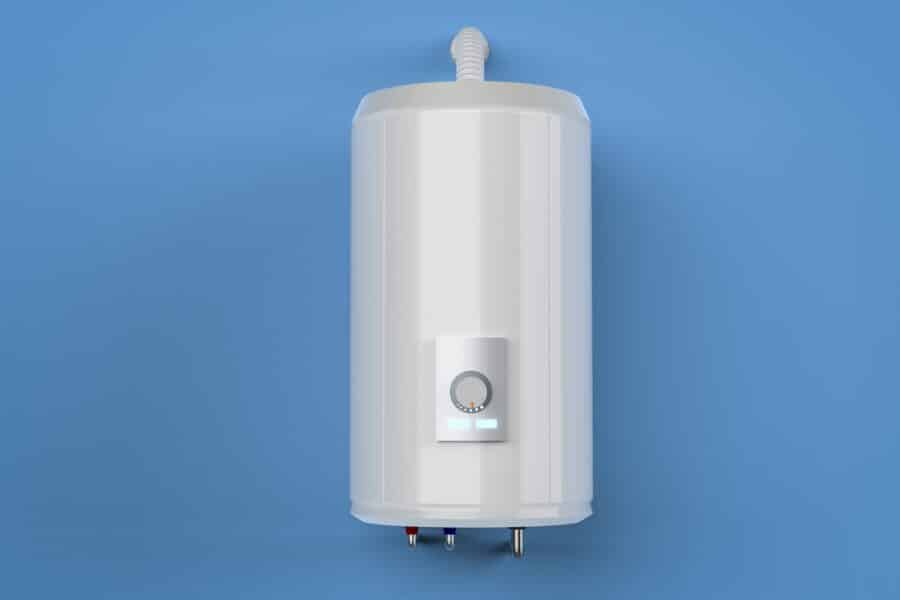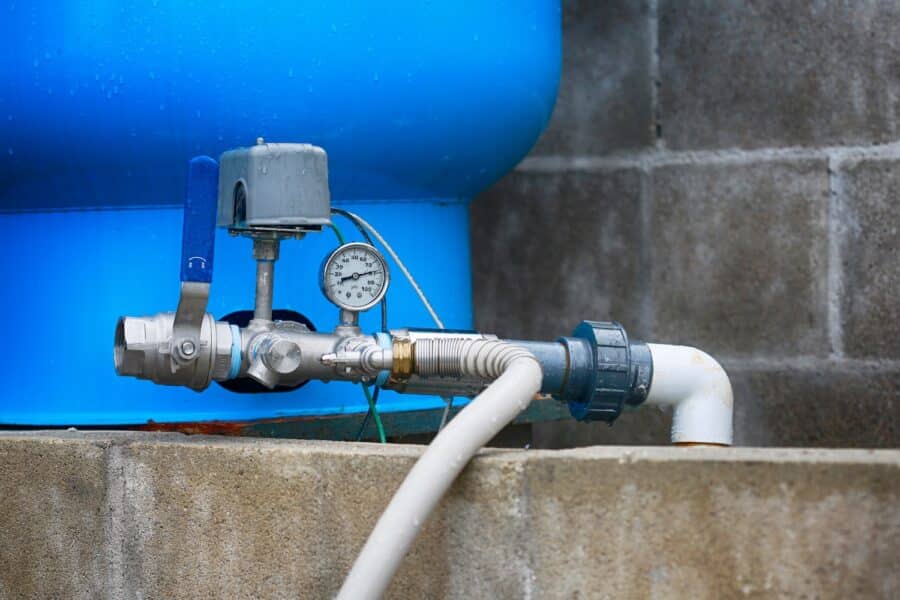
Residential homes can have city water or well water, depending on where you live. If you have a well, life is about 30-50 years. Well water can turn brown because of the iron that is in it and other reasons. How do you get rid of brown well water? Have a water test done, inspect the pipes, water softener, and an iron filter to name a few.
Let’s take a look at why this is important, the 3 common causes, why to have a water test, other causes, how to fix it, maintenance of the well including inspection
Why You Need to Check Your Brown Well Water
Well water is what many residential homes use to drink, cook, and bathe with so it is important that it stays healthy and pure for families to use. However, sometimes it can have a brown color and you need to take notice to see what could be causing the discoloration.

3 Common Causes of Brown Well Water
1. Rusty pipes
If you find that the water coming out of the faucet in certain places in your home is red, it can be rusty pipes. You will want to have this inspected as pipes don’t last forever
2. Iron and Manganese
Sometimes the runoff of stormwater or melted snow water can mix with the soil or iron-bearing rock and cause corrosion of the pipes and discoloration and taste in the water.
There are a few different types of iron that can be in the well
- Iron bacteria- shows up as red-colored slime in the tank of a toilet
- Ferric – red iron and makes the water a cloudy orange or yellow. It is oxidized and can be caught in a filter
- Ferrous – clear water iron and stains ceramics and clothing and requires a water softener. It may look red or brown after it sits for a bit.
3. Mud in the Pump
If the well pulls in mud, it can cause discoloration.

Perform a Water Test
Get a water test to see which type of iron you have. Also, testing water is important to find out if you have anything that can cause harm to the health of your family such as contaminants. You won’t know if your water is safe to drink if any of the 3 causes above are happening and better to be safe than sorry. Furthermore, the water test will tell you the ppm (parts per million), the type and amount of iron, water’s ph, and dissolved oxygen.
The water test should be looking at pH, the concentration of the iron, hardness, dissolved solids, and iron bacteria. Additionally, testing for e-coli bacteria, fecal coliform, and total coliform should also be done during the water test.
Here is a video about brown water
What to Do to Get Rid of Brown Water
Use a Water Softener
This can help with low iron levels that are 3 ppm or less. It costs about $300-$4000 depending on the system chosen.
Pro– can remove resin if not too high
Cons– the resin bed may fail and need replacing every 2-3 years
If a Water Softener Doesn’t Work, Use an Iron Filter
An iron filter is the next one to try if the water softener doesn’t work or you are not sure you want to go in that direction. They work best with water in the 6.5 – 8ph range. The purpose is to take the ferrous iron that is oxidized and convert it to ferric-iron particles. The filters have to be flushed which is also known as backwashed to remove the iron particles that have built up. It uses 10 gallons of water per minute per square foot and it is safe for septic’s and sewers.
Air Aspirated filter – this is for Ferrous iron and puts oxygen into the water. Then, it makes ferrous into ferric.
Carbon filters– they get rid of any taste of chlorine or odor in the water.

Well Inspection Can Help Get Rid of Brown Water
Inspection of the well should be at least once a year. In colder states, such as here in Washington State, the warmer months are probably a better time for inspecting. Additionally, you will want to have it inspected more often if you find there is a color change as mentioned above, the water is cloudy, or you have a drop in water pressure.
The inspection can cost about $300-$500 so it is an investment but whatever you can do to keep it working right for your home is important. It will take a few hours to inspect the well. In the well inspection, the well hole and casing, grout, valves, pressure gauge, control box, capacitors, well cap, and electrical wiring (where applicable) are also checked. Furthermore, testing of water and checking for bacteria and lead are done as well.
When to Call a Professional
If you are unsure of what is going on with the water and want an opinion of someone who is trained in this area, contact a professional. They can help with the issues of the water and recommend treatment.
Conclusion
Anytime that our water turns a color other than clear, we get nervous. Most of the time it isn’t a big deal but it is good to have it checked just in case. Finally, it is important to make sure it is clean and not harming us. With this in mind, maintenance and well inspections should help do the trick. We will take a look at the water coming out of your sink during our home inspections in Olympia, Washington. Questions about your water or in need of our inspection services? Comment below.


